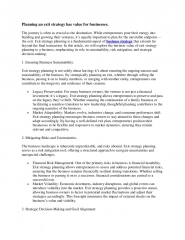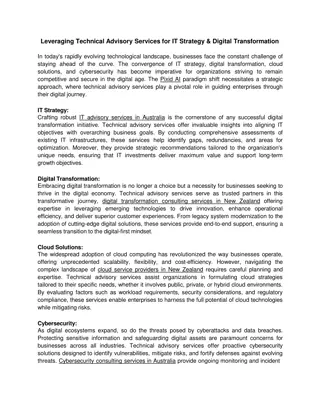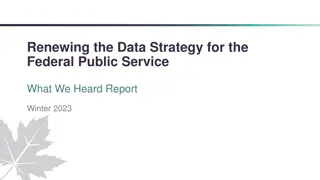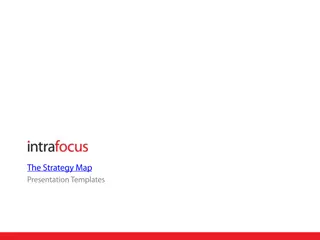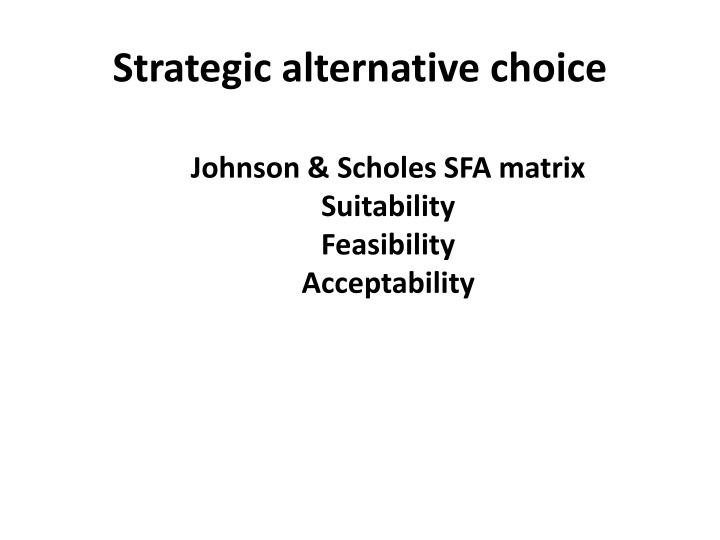
Effective Strategy Implementation and Management Control
Discover the critical steps for successful strategy implementation and management control system. Learn to align initiatives, engage staff, set goals, measure performance, and more to ensure strategic execution.
Download Presentation

Please find below an Image/Link to download the presentation.
The content on the website is provided AS IS for your information and personal use only. It may not be sold, licensed, or shared on other websites without obtaining consent from the author. If you encounter any issues during the download, it is possible that the publisher has removed the file from their server.
You are allowed to download the files provided on this website for personal or commercial use, subject to the condition that they are used lawfully. All files are the property of their respective owners.
The content on the website is provided AS IS for your information and personal use only. It may not be sold, licensed, or shared on other websites without obtaining consent from the author.
E N D
Presentation Transcript
Strategic alternative choice Johnson & Scholes SFA matrix Suitability Feasibility Acceptability
Stakeholder mapping: the power/interest matrix Source: Adapted from A. Mendelow, Proceedings of the Second International Conference on Information Systems, Cambridge, MA, 1986
Strategy Implementation and Management Control System
Build Execution Its often : Our strategy was great but failed to execute 1.60% of the company budgets are not linked to the strategy 2. 30% staff incentives are not linked to strategy 3. Only 10% of the employee understand the strategy
FIVE critical steps of strategy implementation Align your initiatives Align budget and performance Structure follows strategy Engaging staff Monitor and adapt
Management Control System (MCS)
What we manage in the business should be measured
Management Control System Steps 1. Begin by specifying the organization's goals, subgoals and objectives Goals are what the organization hopes to achieve in the long run Subgoals or key success factors are more specific and provide more focus to guide daily actions Objectives are specific benchmarks which management would like to see achieved Important to keep all three in balance to avoid concentrating solely on short-runachievements at the expense of long run goals 2. Establish responsibility centers 3. Develop performance measures 4. Measure and report on financial performance 5. Measure and report on non-financial performance
The Management Control System Set Goals, Measures, Targets Feedback and Learning Plan and Execute Evaluate, Reward Monitor, Report
Key Performance Indicator (KPI) and Performance Measure Development Organization goal/ Mother KPI A set of quantifiable measures that a company or industry uses to gauge or compare performance in terms of meeting their strategic and operational goals. Departmental objective/KPI if a software company's goal is to have the fastest growth in its industry, its main performance indicator may be the measure of revenue growth year-on-year. Team objective/KPI Individual objective/KPI 10
Periodical performance measurement system 1. Feed forward performance measurement 2. Feed back performance measurement 11
Developing a performance matrix Developing performance metrics usually follows a process of: Establishing critical processes/customer requirements Identifying specific, quantifiable outputs of work Establishing targets against which results can be scored 12
Performance Indicators 1. Financial performance indicators 2. Non-Financial performance indicators 13
Financial performance measurement Traditionally organization performance is measured through set of financial KPI. Outcome of the organization performances are indicated through financial performances. Board level to share holders are much more interested about the financial results at the end of the financial year. 14
Developing financial performance measurement Financial performance system is traditionally starting during the budgeting process. Budgets is the next financial year plan and it reflects the expected financial outcome if the plan goal is achieved as expected. 15
Possible disturbance to the budget variance Unexpected competitor reaction Price revision and drop in market demand Drop in market demand due to adverse political decision Internal inefficiencies Global issue 16
Most of Todays Feedback Systems Are Controls Oriented Variance Detected Correction Applied Management Feedback & Control Loop
Dash board reporting / Financial performance Budget KPI Actual KPI Variance KPI Sales 100,000 90,000 Cost of sales 30,000 30,000 Gross profit 70,000 60,000 -Operational Expenses 20,000 15000 PBIT 50,000 45,000 -Interest 10,000 10000 PBT 40,000 -Tax 20,000 PAT 20,000 35,000 20,000 25,000 18
Financial KPI 1. Gross profit margin 2. Operational profit margin 3. Net profit margin 4. ROCE/ ROE 5. Debtors collection period 6. Stock turn over period 19
Successful Organizations and Measures of Achievement FINANCIAL STRENGTH CUSTOMER SATISFACTION BUSINESSS PROCESS IMPROVEMENTS ORGANIZATIONAL LEARNING
Non financial performance measurements Financial performances measurements are the outcome of the company performances. However financial results are driven by the other operational areas of the business which we need to continue sly measure the progress. 21
What is the balanced scorecard? Developed in the early 1990 s by Dr. Robert Kaplan and David Norton "The balanced scorecard retains traditional financial measures. But financial measures tell the story of past events, an adequate story for industrial age companies for which investments in long-term capabilities and customer relationships were not critical for success. These financial measures are inadequate, however, for guiding and evaluating the journey that information age companies must make to create future value through investment in customers, suppliers, employees, processes, technology, and innovation."
What is the balanced scorecard? The balanced scorecard is centered on four performance metrics or perspectives: Customers Internal processes Financial Learning and growth When implemented properly, each one of these perspectives contains four subparts consisting of Objectives Measures Targets Initiatives
Internal Process/Process efficiency Cost Throughput Quality Multiple productivity measures may include Labour cost as a % of sales dollars Sales per employee Machinery & equipment investments per employee Total labour cost per hour Production lead time Wastage percentage Efficiency WIP % % of defects
FinancialPerformance The financial performance perspective of the balanced scorecard addresses the question of how shareholders view the firm and which financial goals are desired from the shareholder s perspective. These financial goals are dependent on the company s stage in the business life cycle.
Financial Performance The table below outlines possible financial performance objectives and their metrics. Objective Specific Measure Growth Revenue Growth Profitability Return on equity Cost Leadership Unit Cost
Key performance indicators include: Illness rate/days of absence Employee turnover Gender/racial ratios Internal promotion %
Customer perspective Many companies today have a corporate mission that focuses on the customer. To be number one in delivering value to customers is a typical mission statement. How a company is performing from its customers perspective has become, therefore, a priority for top management. The balanced scorecard demands that managers translate their general mission statement on customer service into specific measures that reflect the factors that really matter to customers.
Sustainability Indicators Social performance indicators: labor practices, human rights, and broader issues affecting consumers, community, and other stakeholders in society. Environmental performance indicators (KePI): greenhouse gas emissions, water consumption, waste output

